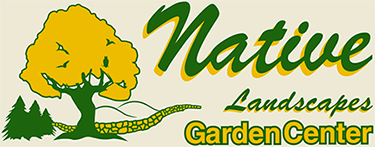May is a busy month for gardeners. It begins looking much like winter with most trees getting ready to bud out and ends looking a lot like summer with all trees and shrubs in full leaf. The landscape changes by the day in May and it is interesting and fun to document this transformation.
Flowers are everywhere and you may have noticed drifts of violets within your lawn. This broadleaf perennial that blooms this time of year can be found in every shade of lavender, white and yellow. The violets are a very important nectar source for our native bees.
It’s been a rainy, cold spring so many of the brooks and ponds were at their high water mark this past April. Water levels start to lower in ponds and streams during the month of May, and that’s when the trout start biting for local fishermen. There are still some secret fishing holes where brook trout can be found hiding under a stump at the curve in the river where the current slows. Brook trout are not really trout but are in the Char family. Brook trout are more closely related to salmon rather than trout. Brook trout is New York’s State Fish. It is a native fish that can be found in clean, oxygen-rich waters. In my youth, I could be found this time of year back in the deep woods with a pocket fisherman, a small fry pan, bread and butter. I would catch a couple of fry-size brook trout and cook and eat them in the woods. This made for a great sandwich.
This spring as we are working around our property we have the time to focus on planting a sustainable, edible landscape. If we have the room, we can establish an orchard with numerous varieties of fruit trees. In our area I have had success with growing apple trees, pears, peaches, plums, and cherries. Additionally, I have planted many native trees and shrubs.
The native Paw Paw tree is one of my favorite North American fruits. The Paw Paw’s fruit has a tasty tropical flavor and custard-like texture. This tree does not self-pollinate so in order to get fruit we need to plant 2-3 trees for cross pollination.
Blueberry shrubs are a must for most residential landscapes. This native shrub has four season interest and rewards us with a late season fruit that makes for an extremely healthy snack. Blueberry shrubs require an acidic soil so a PH of 5.5 can be reached by adding oak leaf compost, peat moss or a sulfur soil additive. Blueberry shrubs come in two sizes. The standard size blueberry shrubs will grow up to six feet tall. The low bush blueberry will grow a foot high and makes a great ground cover.
The Elderberry is a large shrub that should be planted in everyone’s yard. Elderberry is another native shrub that is easy to grow and produces bushels of small, dark, red berries loaded with Vitamin C and antioxidants. I would also recommend growing Lingonberry, Huckleberry, Cranberry, and Blackcap Native Raspberry to round out the hedgerow along the property line. Adding these canes and shrubs to the hedgerow will give us more privacy and additional fruiting capabilities in our landscape.
As an early riser, I often venture out into the yard to work around the garden. During these early morning hours, songbirds are singing their hearts out. Mocking birds, Jays, Robins, Cardinals, Red-wing Blackbirds, Mourning Doves, Woodpeckers and Turkey are all calling out to their mates to build a home and start a family.
By Memorial Day we should have our vegetable garden all planted and ready for the June, July and August sun. This year let’s go all out and plant every vegetable we can fit into the garden. It has been a tough couple of years for tomatoes because we have had a few wet summers in a row. This year let’s hope for a dry, warm summer where we can control the moisture. These warm, dry summer conditions, usually bring the best yields.
Let’s experiment this year with cold-hardy figs. The fig fruit is really an inside-out flower that can be grown in containers. Most figs are not cold-hardy in our region, therefore putting figs in containers and bringing them into the garage during winter, makes the most sense.
The native strawberry Fragaria virginiana, should always have a place in the edible landscape. As a ground cover, strawberries are my first choice. Growing many different varieties of strawberries will ensure heavy fruit production. Strawberries prefer full sun, but will also fruit in a partially shady environment. Let’s grow some good eats this season.
